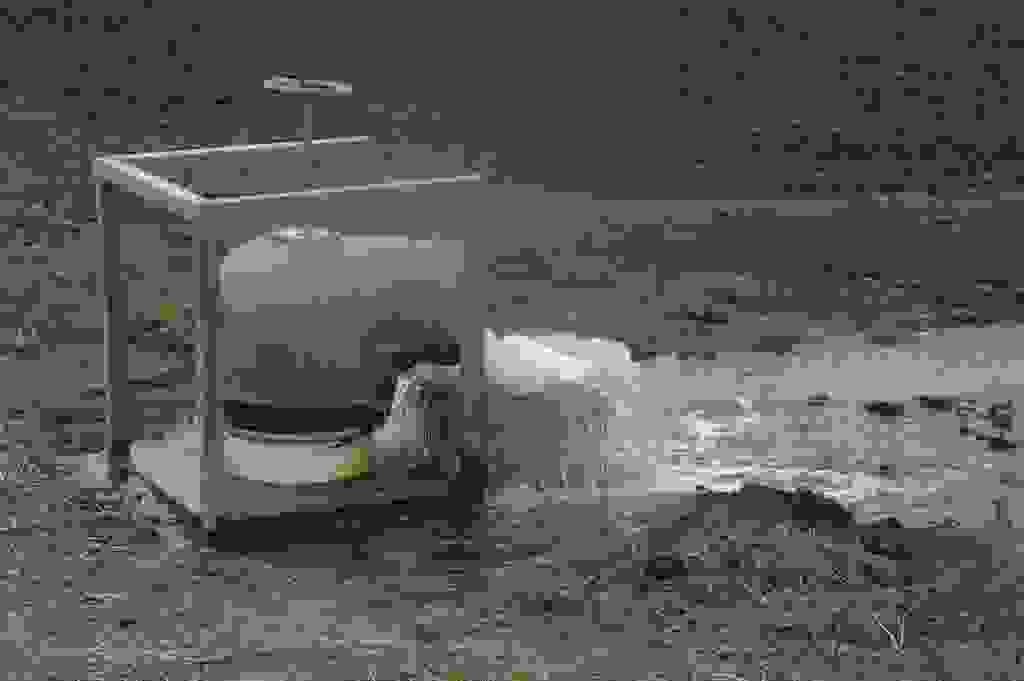Twitter and Facebook were active with tweets and posts after the recent boil water notices issued in Austin and other cities as well as the expansive flooding in Texas, particularly in Central Texas.
If you have your own private water well, do the boil water notices in your area affect you? What do you do if you think your water well has flooded? Is your well water safe to drink and to use for household duties?
Experts with the Texas A&M AgriLife Extension Service’s Texas Well Owner Network have some answers. In fact, they have been sending vital information throughout Texas and to their colleagues in Florida, South Carolina, North Carolina and Virginia to help with those areas’ flooding.
Dr. Drew Gholson, AgriLife Extension program specialist and Texas Well Owner Network coordinator, said the boil water notices affect only those who are getting their water from the utilities issuing the notices.
For those private water well owners in the flooded areas, the key to knowing if your well water is safe is determining if your particular well has flooded.
“If your water well is shallow and located in the floodplain of a river or stream, it may have flooded,” Gholson said. “Pollutants from the stream can contaminate the well water.”
Dr. Diane Boellstorff, AgriLife Extension water resource specialist, said floodwater might contain substances from upstream, such as manure, sewage from flooded septic systems or wastewater treatment plants, or other contaminants. A septic system near a well also can cause contamination when the soil is flooded.
“If your well is submerged even temporarily, you should not drink, brush your teeth or cook with the well water until it is tested and found suitable,” Boellstorff said.
Gholson said well owners should monitor any changes in the quality or quantity of water from the well and in nearby streams, and any changes in the well water’s color, taste or odor.
If the well has been flooded, then you should assume your well water is contaminated and have it tested.
In the meantime, follow the same recommendations issued by Austin Water and other water utilities: use only bottled, boiled or treated water until water has been tested and found safe.
“To make water safe for drinking, cooking and washing, bring it to a rolling boil for at least one minute and then allow it to cool,” Gholson said.
He said after a flood, wells should also be inspected for physical damage and signs of leakage. “If it appears damaged, consult a licensed water well contractor to determine whether repairs are needed,” Gholson said.
He also said flooding can damage the well pump and electrical systems.
“If the pump and/or electrical system has been underwater and it is not designed to be under water, do not turn on the pump as there is a potential for electrical shock or damage to your well or pump.”
Once floodwaters have receded and pump and electrical system have dried, Gholson said a qualified electrician, well driller or pump installer should check the wiring system and other well components.
Gholson and Boellstorff have these additional recommendations for flooded water wells:
- Before using the water, get your well water tested. To find a laboratory, call your county health department or choose a certified drinking water laboratory from the National Environmental Laboratory Accreditation Program.
- If the well has been flooded or if tests show that the water contains fecal coliform or E. colibacteria, it is recommended to hire a licensed water well driller to shock chlorinate the well.
Other helpful resources:
Even if you determine your water well is not flooded, the water should be tested every year. “At a minimum, test it every year for nitrate, total dissolved solids and E. coli or fecal coliform,” Gholson said.
The Texas Well Owners Network website has more fact sheets and flood resources to help you.


